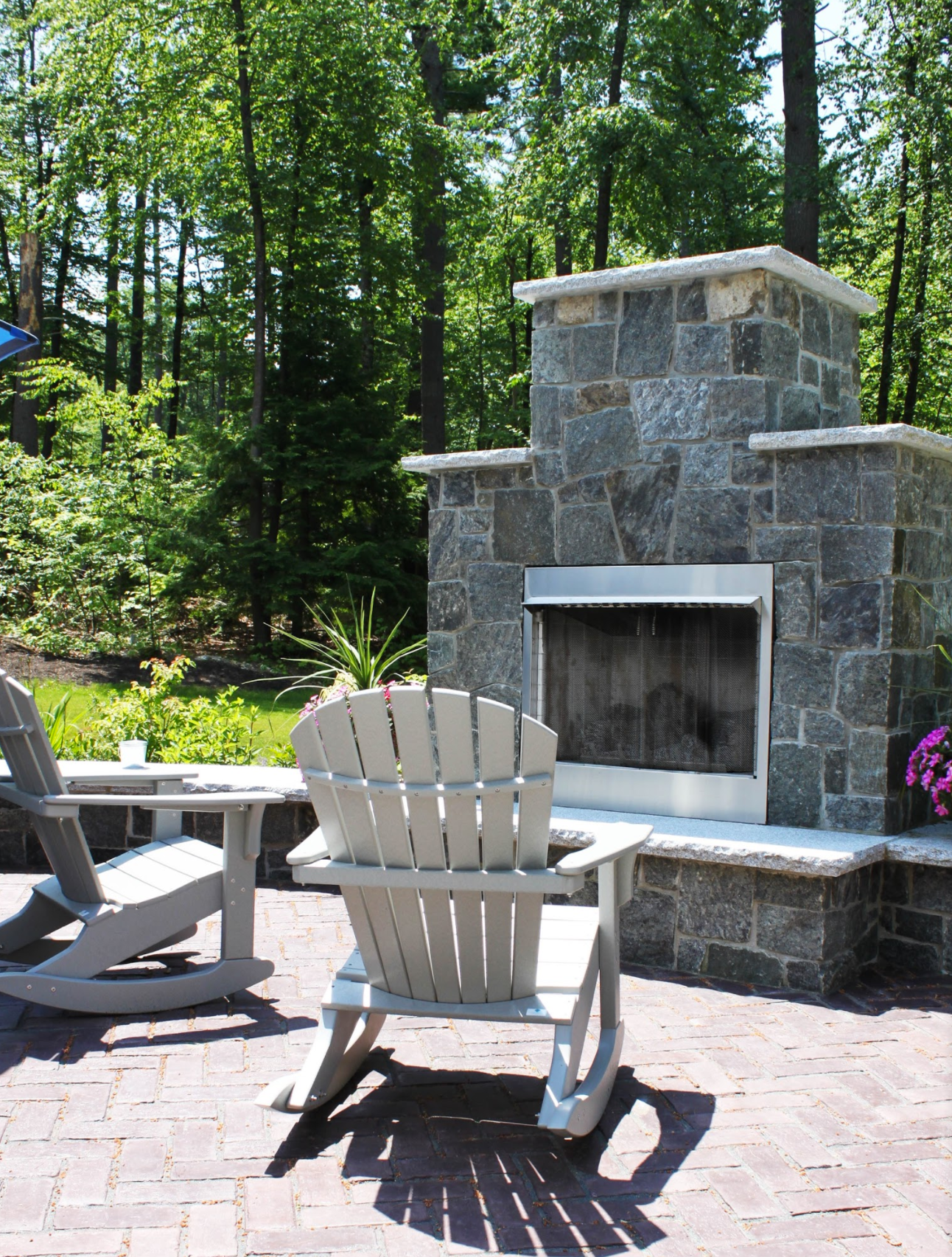Achieve Easy Heat on Chilly Nights With a Gas-Fueled Outdoor Fireplace in Bedford, NH and Milford, NH
As you spend time in your backyard with friends and family all summer long, you don’t want the fun to end just because the days - and nights - get a little chillier. Including a gas-fueled outdoor fireplace in your plan will ensure that you get maximum enjoyment of your outdoor space year-round. Gas fires have many benefits over wood fires, and you’ll be able to achieve easy heat on chilly nights with a gas-fueled outdoor fireplace in Bedford, NH and Milford, NH.
Related: 5 TIPS FROM A LANDSCAPER FOR A STYLISH BACKYARD IN 2021 IN AMHERST AND HOLLIS NH AREAS
First, why choose a gas-fueled outdoor fireplace over wood?
The two fuels commonly used in outdoor fire features are wood and gas. Wood is a charming source of fuel that reminds us of great memories around the campfire or around the family fireplace. Nothing can beat the scent or the ever-changing visual and auditory experience. And yet, wood may not be the ideal fuel for all applications. Wood fires are inconsistent and require constant maintenance. They may produce an incredible amount of heat or flush out quickly. Wood also tends to produce a large amount of smoke, which may prove to be a nuisance for some guests and neighbors. As well, there’s the hassle of storing and handling wood and some municipalities forbid the use of wood-fueled fire features due to air quality or safety concerns.
Gas-fueled fires are safer and much easier to control. The temperature and intensity of the fire can be easily controlled with the turn of a dial. They require almost no cleaning and never any maintenance while it’s burning. Gas-fueled fires may be placed in small areas, which is why it’s a popular fuel for outdoor fireplaces situated close to shelter structures such as pergolas. Gas fires do not produce the acrid smoke that wood fires do, so there’s less of a chance of anyone coughing or sneezing because they stood in the wrong spot.
Once you decide on the fuel, you can focus on design. Any type of outdoor fireplace will need a chimney although as we mentioned, you can place a gas-fueled fireplace in much closer proximity to roof overhangs and other potentially flammable surfaces and structures.
Outdoor fireplaces are grand structures that command attention. You could choose a free-standing outdoor fireplace - which quickly becomes not only the hub of outdoor living but a stunning focal point as well - a majestic freestanding fireplace will turn heads.
Outdoor fireplaces are often positioned along one side of a pergola or pavilion. This creates a cozy sheltered spot with a distinct living room feel. Whether you’re under the full protection of a pavilion (with a solid roof) or the partial protection of a pergola that tames the hot summer sun yet allows heat to escape, you’ll enjoy a destination that’s just right for relaxing or for entertaining.
Or, an outdoor fireplace could also be built into a retaining wall on a sloped site. This approach automatically creates a welcoming living room feel where you feel partially enclosed yet still enjoy the fresh air and starlit skies of a patio.
The masonry style you choose should be inspired by the broader aesthetic of your home and landscape. There is a wide variety of different stone colors, shapes, and textures you can adapt into your outdoor fireplace so it blends right into your landscape. While many homeowners choose masonry that blends in, you could also opt for creating a statement piece that turns heads while providing cozy warmth. This means wildly contrasting materials that are used nowhere else in the landscape.
Related: 3 LANDSCAPE DESIGN IDEAS TO TAKE YOUR LANDSCAPING TO THE NEXT LEVEL IN 2021 IN PETERBOROUGH NH

